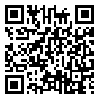BibTeX | RIS | EndNote | Medlars | ProCite | Reference Manager | RefWorks
Send citation to:
URL: http://tumj.tums.ac.ir/article-1-134-en.html
2- Department of Radiology, Rasoule- Akram Hospital, Tehran University of Medical Sciences, Tehran, Iran ,
Background: Since non-contrast spiral CT (NCCT) is an imaging method of choice performed before extracorporeal shockwave lithotripsy (ESWL), we aimed to find the association between renal stone characteristics including stone density, location, volume, and skin-to-stone distance (SSD) on NCCT and ESWL success for a more efficient selection of patients for the procedure.
Methods: We retrospectively studied 100 patients having undergone initial ESWL for a solitary renal calculus of 0.5-2.5 cm. Stone size, location, density, and SSD were determined on pretreatment NNCT. The outcome was categorized as stone free, complete fragmentation (<5 mm), incomplete fragmentation (>5 mm) and unchanged, based on KUB radiography 2 weeks after ESWL.
Results: Of 100 patients, 32 were female and 68 were male with a mean age of 46.7 years. ESWL was successful in 55 and failure occurred in 45 patients. Sex (P=0.301), age (P=0.895) and SSD (P=4.06) were not associated with treatment success. Mean stone volume in ESWL success and failure groups, respectively were 531.4 and 930.5 mm3 and stone volume was statistically associated with treatment success (P=0.01). Mean stone density in ESWL success and failure groups were 545.7 and 962.3 HU, respectively and stone density was also associated with ESWL success (P<0.01). ESWL failure likelihood was 5 times greater in stones with a density >740 HU than smaller stones.
Conclusion: We strongly suggest performing densitometry in bone window for renal stones on pre-ESWL NCCT scanning and using an alternative treatment other than ESWL for stone densities greater than 740 HU.
| Rights and permissions | |
 |
This work is licensed under a Creative Commons Attribution-NonCommercial 4.0 International License. |





